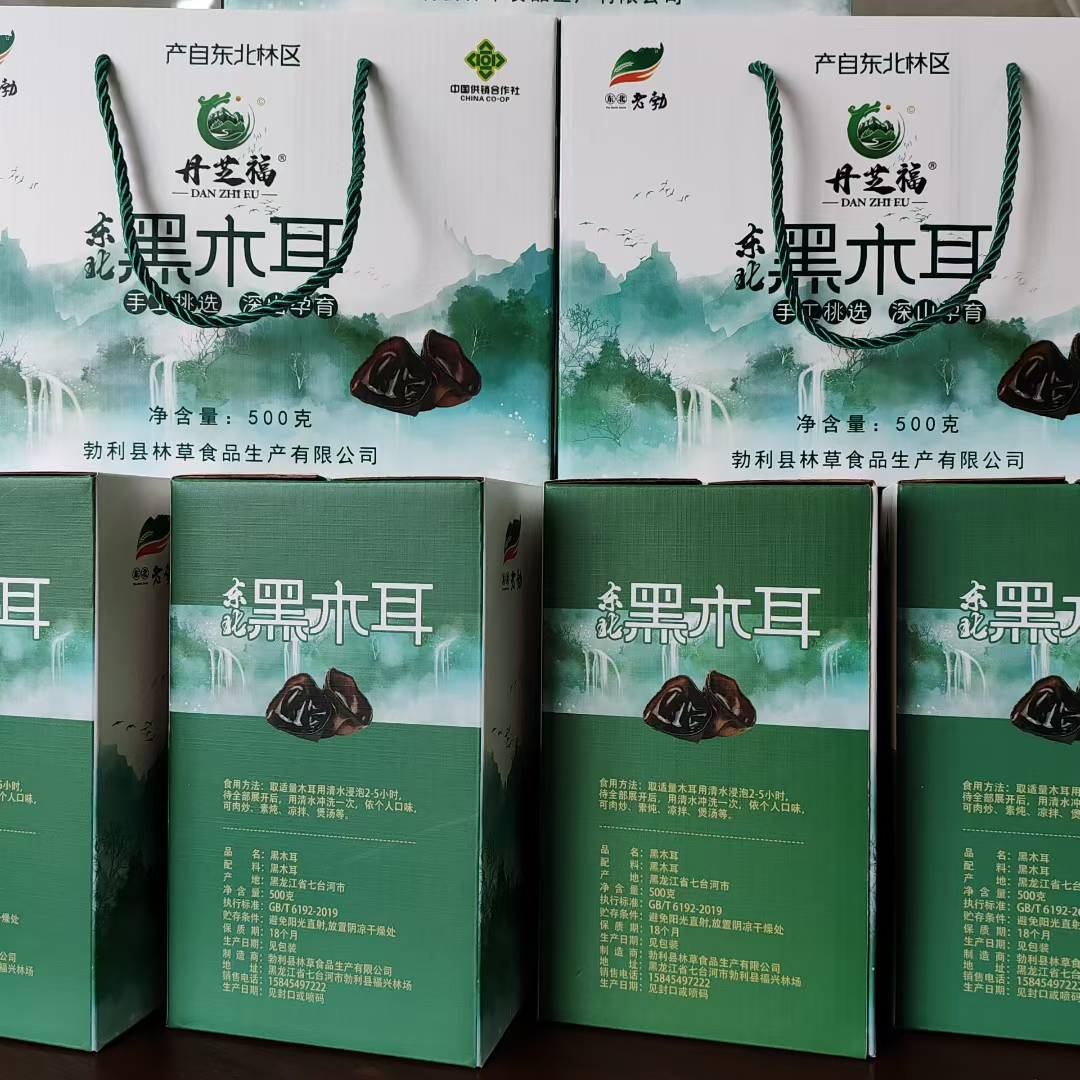Place of Origin: Boli County, Qitaihe City, Heilongjiang Province
Morphological Characteristics: When fresh, it is soft, gelatinous, semi-transparent, and concave in the middle. The diameter of the ear piece can reach 5-6 cm, with a cyan-brown back and a dark brown ventral surface. When dried, it shrinks strongly, becoming horny, hard and brittle, and dark brown or black.
Nutritional Value
Protein and Amino Acids: It contains a large amount of protein and 8 essential amino acids for the human body, among which the contents of lysine and leucine are relatively high.
Vitamins and Minerals: It is rich in vitamins B1, B2, C, carotene, etc., as well as abundant minerals such as iron, zinc, and selenium. Its iron content is higher than that of spinach, and its zinc content is higher than that of other fungi.
Dietary Fiber: It has a high content of dietary fiber, which helps promote intestinal peristalsis, prevent and treat constipation, and maintain intestinal health.
Polysaccharides: It contains various polysaccharides such as black fungus polysaccharides, which have multiple effects such as enhancing immunity, anti-tumor, and anti-oxidation.
Edible Effects: It is recorded in ancient books such as *Yin Shan Zheng Yao* (Dietary Essentials) and *Ri Yong Ben Cao* (Daily Materia Medica) that it has the effects of tonifying qi and blood, moistening the lungs to relieve cough, stopping bleeding, lowering blood pressure, and fighting cancer. It can be used to treat symptoms such as qi and blood deficiency, lung deficiency cough, hemoptysis, and hematemesis.
Health Care Effects: It can reduce blood viscosity, inhibit platelet aggregation, prevent thrombosis, reduce cholesterol content in the blood, prevent atherosclerosis, and also has anti-ulcer, anti-radiation, and anti-inflammatory effects.
Edible Methods
Cold Mixing: Blanch the soaked black fungus, then add chopped green onion, ginger, garlic, light soy sauce, vinegar, sesame oil, etc.







 Instant Messaging
Instant Messaging Video Call
Video Call

